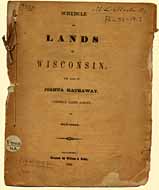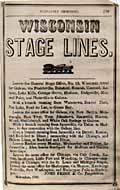

 |
 |
The State of Wisconsin |
||
 |
Every state must have laws to live by. First of all it must have a constitution, a paper telling how the state is to be governed. Our leaders had to have a state constitution to show the lawmakers of the United States when they asked if Wisconsin might become a state. So, in 1846, a meeting was held at Madison. The people of Wisconsin did not like the constitution written at this convention and they voted against it. A second convention was held at Madison the next year. Morgan L. Martin, a Green Bay lawyer, was chairman at this meeting. The constitution written this time pleased our people. The lawmakers in Washington liked it too. They voted to let us join them, and in 1848 we became the thirtieth state. Nelson Dewey was elected the first governor of the state. He was proud to be our leader. In the twelve years that Wisconsin was a territory the population had grown from 22,000 to nearly a quarter of a million. But there was room for many more people. A man could travel for days along the 316 miles of Wisconsin's greatest length and not see a single home. He might ride for days along the 295 miles of Wisconsin's greatest width without seeing a cabin or a human being. The northern region was still wilderness. But the cities were growing. Milwaukee, the largest city, had 18,000 people. Racine, the second city, had 4,000, and Madison had about 3,000. Most people earned their living by mining, lumbering, or farming. Much maple sugar was made. The manufacture of leather, beer, clothing, and iron products was just beginning. It was good to live in Wisconsin. |
 |
 Milwaukee 1854 |
 Racine |